The museum was founded in 1882 at the Geological Committee of Russia and was supposed to illustrate national geology using sheets of geological maps at a scale of ten verst to the inch. In 1930, the museum was open to visitors. In the same year, the museum was named after Academician F.N. Chernyshev, who made an invaluable contribution to the creation of the museum.

Entrance
Today, the Central Geological Research Museum is one of the largest natural history museums in the world. The museum’s collections number more than 1 million individual items. In its exhibition halls of total area of 3,750 m2, over 80,000 samples of minerals, rocks, ores, fossil fauna and flora are exhibited.
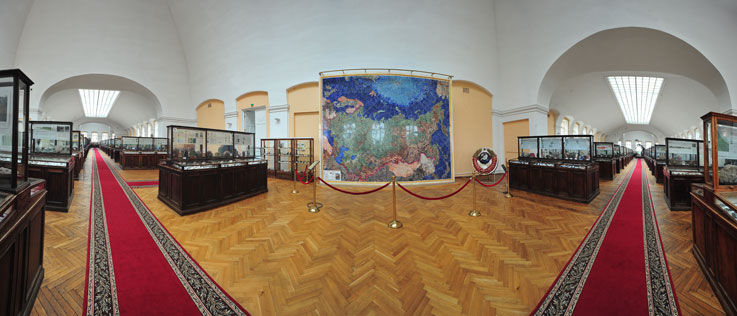
general view of the hall
The museum’s exposition consists of three major exhibition blocks: “Regional Geology”, “Minerals” and “Monographic Paleontology”.
There is a thin-section library in the museum, large and the only scientific storage of primary petrographic material in Russia with 1,400 petrographic collections (over 350,000 thin sections) for printed and archive materials on regional geology, metallogeny, mineralogy, petrography, including those to monographs of prominent geologists: A.K. Boldyrev, A.N. Zavaritsky, A.P. Karpinsky, V.N. Lodochnikov and many others.
Currently, the museum’s work is aimed at creating a unified system for the formation, storage, recording and use of geological collection material. Main lines of efforts are:
Central Geological Research Museum is a major cultural and educational center. It is visited by schoolchildren, since the subject of tours organized by the museum is closely related to school programs in natural history, geology, biology, ecology, physics, chemistry, the history of the city, etc. Much attention in organizing the educational activities of the Central Geological Research Museum is given to the work with pupils and students of lyceums, colleges and universities. Students of technical, humanitarian, natural and artistic specialties can obtain a diverse range of information depending on their future profession.
The museum is of great interest for single visitors who do not use the services of guides, because the construction of expositions allows one not to get lost in the halls of the museum.
About 10,000 visitors come to the museum annually, 70% of them are part of tour groups. About 600 tours are arranged every year; it is possible to conduct tours for 2 or 3 groups simultaneously. The tour lasts from 45 minutes to 1.5 hours depending on the age of the visitors.
The museum takes part in citywide cultural events.
So, in 2004, together with the “Ursa Major” Regional Public Charitable Movement, the “Dinosaur’s Birthday” festival was held for disabled children, the program of which included tours, a quiz, children creativity competition “Dinosaur Planet”, viewing scientific-popular films on geological subjects.
In the same year, as part of the 4th Festival “Contemporary Art in a Traditional Museum”, held by the St. Petersburg Pro-Arte Charitable Foundation for Culture and Art the museum presented the P. Shvetsov’s installation “Columbarius”, a memorial dedicated to extinct species of animals.
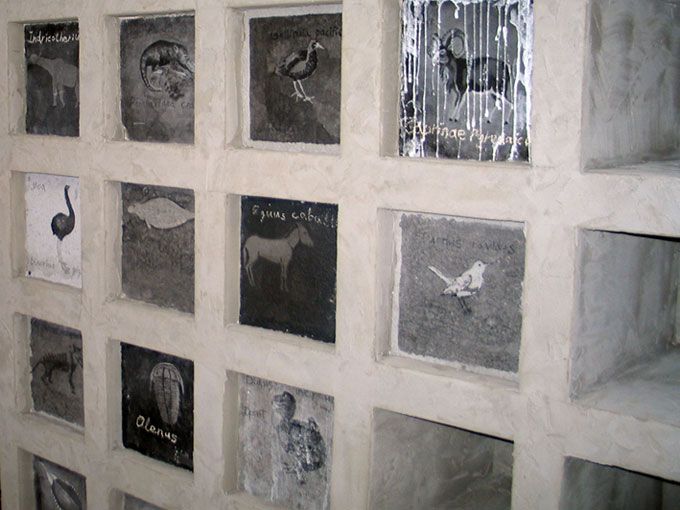
installation “Columbarius”
In 2015, as part of the same festival, the museum presented the video installation “The Big Meteor Trap” by Agnes Meyer-Brandis, the German artist.
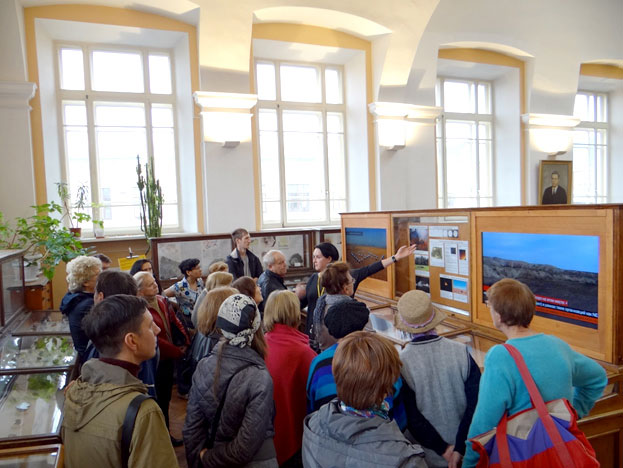
video installation “The Big Meteor Trap”
In 2006, the museum took part in the “Children's Days in St. Petersburg” citywide festival in the framework of which educational routes were developed for children of different age groups.
In 2011 and 2012, the museum took part in the “Museum Night” campaign, during which 7,500 and 9,000 people respectively visited the museum.
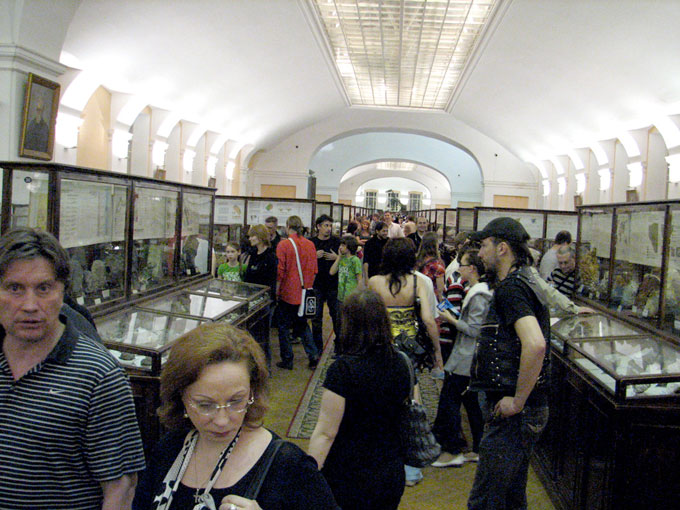

“Museum Night” 2012
In 2012 and 2013, the museum took part in the educational program-competition of the Oceanarium "Big Regatta". Tours were conducted for “teams” of different-age groups, after which the participants passed a test according to the information they had received during the tour.
One of the museum’s unique exhibits is a monument of Russian stone-cutting art of the 30s of the 20th century: the panel “Industry of Socialism”, made in the technique of Florentine and Russian mosaics from jewelry and ornamental stones.
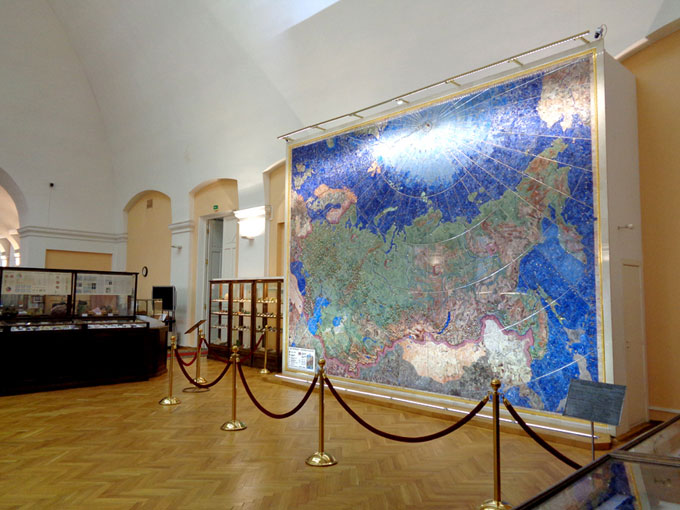
panel “Industry of Socialism”
The panel was created in 1937; it was exhibited at the World Exhibitions in Paris (1937) and New York (1939). From 1946 to 1982 it was exhibited in the St. George Hall of the State Hermitage Museum, and in 1987, the panel was given for permanent storage to the Acad. F.N. Chernyshev Central Geological Research Museum.
The panel measuring 26.6 m2 is a precise physical and geographical map of the USSR at a scale of 1:1,500,000. The mosaic set is made of 45,000 plates of jasper, lapis lazuli, amazonite and rhodonite. Settlements are indicated by gilded silver stars with inserts of artificial rubies. The lines of parallels, meridians and all geographical names are made of platinum silver. Faceted emerald, alexandrite, aquamarine, topaz, phenakite, rock crystal, garnet, precious opal are used in the overlay decor.
In 2006-2013, with the active support of the Federal Agency on Mineral Resources, the panel was completely restored with the transfer of the mosaic set to the slate base and the restoration of the overlay decor of faceted precious and jewelry-ornamental stones denoting enterprises of various industries.
EXHIBITS